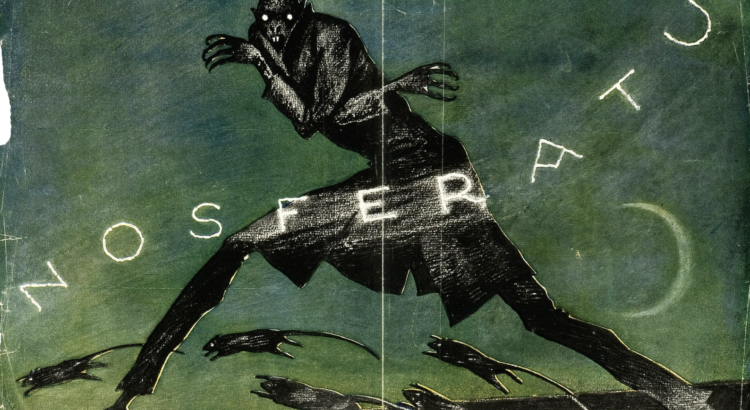Nosferatu is oddly enough a character who is easy to relate to. I, too, am looking for suitable housing (an impossible task in Ann Arbor), sleep at hours these mortals deem “strange,” and have an awkward gait. But more deeply than that is a common feeling between Nosferatu and I of a sensationalized otherness. Perhaps his placement as a social pariah is based in folklore more ancient than my own, but the results are the same, creating a clear boundary between ourselves and genteel society. But this is not a feeling I suspect is unique to myself; however much we interact with others there seems to lurk some lingering doubt of our place amongst humanity. It is exactly this relatability to the undisputed villain of a story that enriches and truly enthralls.
Besides the titular character, I am most struck by Ellen, the heroine who is married to the real estate agent that is saddled with the responsibility to sell Nosferatu a house. She is the epitome of 1920s silent film glamour, with her wide eyes, expressively drawn eyebrows, and impossibily pale complexion. She is similarly ghoulish in appearance to Nosferatu, looking perfectly skeletal in the strength of her jaw and the hollows of her orbital cavities. Although the lady in distress act is a terrifyingly misogynistic trope, I think she is still able to exhibit her character’s strength even while continuously fainting and falling all over her brave husband. She is the reason Nosferatu is defeated, even if she is not credited much for her bravery. And through all the distress this lady goes through, her ringlets remain immaculate.
The movie as a whole is simply so encapsulating to experience. The architecture is dominated by heavy stone and dense wood, underground cavernous spaces and grand buildings that feel claustrophic despite their massive size. Though created and set in a time after the gothic period, that sense of aesthetics is present in all aspects of the film, from the buildings to the formality in the characters’ behavior and clothing.
Furthermore, the great Andrew Rogers added to the ambiance and feeling of the movie through his greatly talented organ playing. After the show, he came on stage and answered questions about his work. Amazingly, though there is some composed music for Nosferatu’s organ accompaniment, Rogers chooses to play it freestyle, taking his love of the movie and his knowledge of the instrument and turning it into song that perfectly plays up emotional moments and adds tension. He spoke with such passion, and I could feel how much he cared for the organ and its preservation. Though the movie is an hour and a half long, he doesn’t feel so much time passing, equating the performance to ten minutes of playing. His commitment to keeping this art form alive is truly inspiring, and it was so nice to see how fully lost he got in what he loves.


If you have not seen Nosferatu, I’d recommend renting it, especially during this Halloween season. Watch it alone in a dank, dark basement (if you dare) or with a group of friends and family all dressed as your favorite characters. Though I have not had the pleasure of group Nosferatu costuming, I feel that applying and rocking a bald cap with the people you love is a fabulous bonding experience.






Your reviews are some of my favorite to read on arts seen… And I love your costume! Did people at the theatre get creeped out to sit next to you?
Love your skull cap and costume!
@Josh and Joe: thank you!! No one sat next to me save the friend who came with to watch, but I did receive some kind compliments